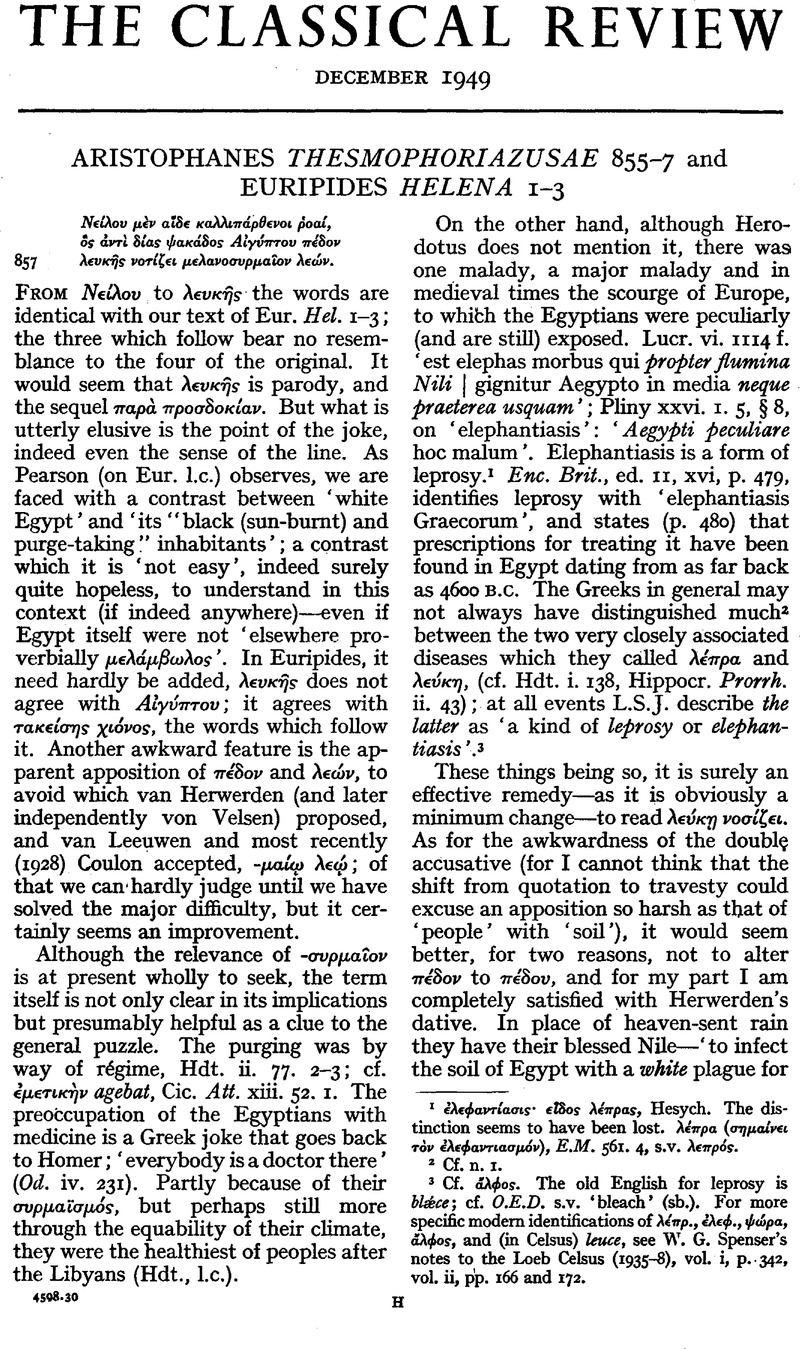No CrossRef data available.
Published online by Cambridge University Press: 27 October 2009

page 81 note 1 ⋯λεφαντ⋯ασις ειδος λ⋯πρας, Hesych. The distinction seems to have been lost. λ⋯πρα σημα⋯νειτ⋯ν ⋯λεφαντιασμ⋯ν E.M. 561. 4, s.v. λµπρóς.
page 81 note 2 Cf. n. 1.
page 81 note 3 Cf. ⋯λφоσ. The old English for leprosy is blaéce; cf. O.E.D. s.v. ‘bleach’ (sb.). For more specific modern identifications of λ⋯πρ., ⋯λεφ., Ϋώρα, ἄλφος, and (in Celsus) leuce, see W. G. Spenser's notes to the Loeb Celsus (1935–8), vol. i, p. 342, vol. ii, pp. 166 and 172.
page 82 note 1 Ross, W. D., Aristotle, p. 13Google Scholar.
page 82 note 2 The others are Pax 1254, fr. 265.
page 82 note 3 Contrast the presentation of the same explanation in fr. 228. 3 f.
page 82 note 4 Where, incidentally, I suspect the true reading to be ὦ γ⋯ς παλαι⋯ς ⋯ρςμ⋯ς, Ἰν⋯χου ῥοα⋯. And this would make another point of comparison. Cf. Aesch. Pars. 806.